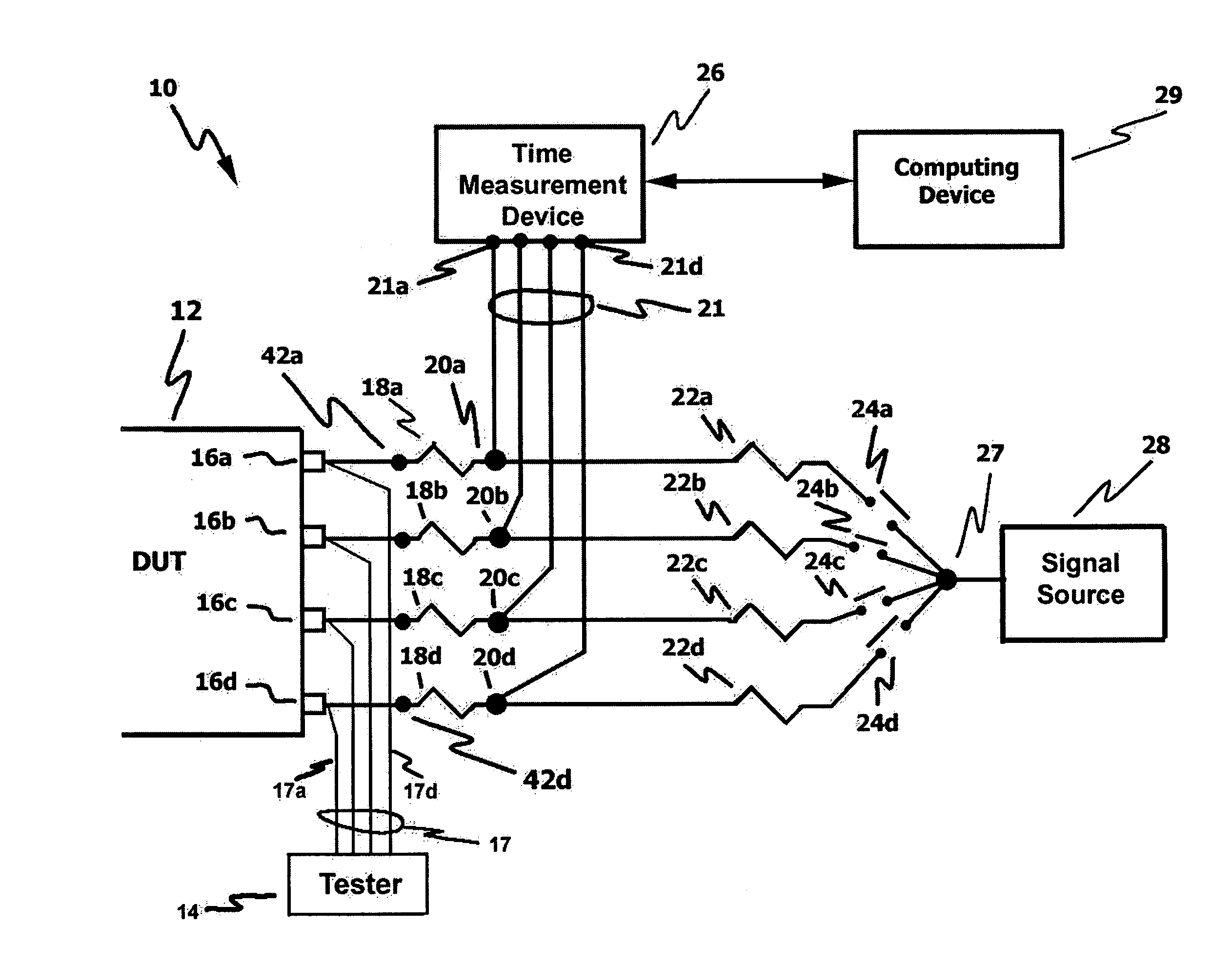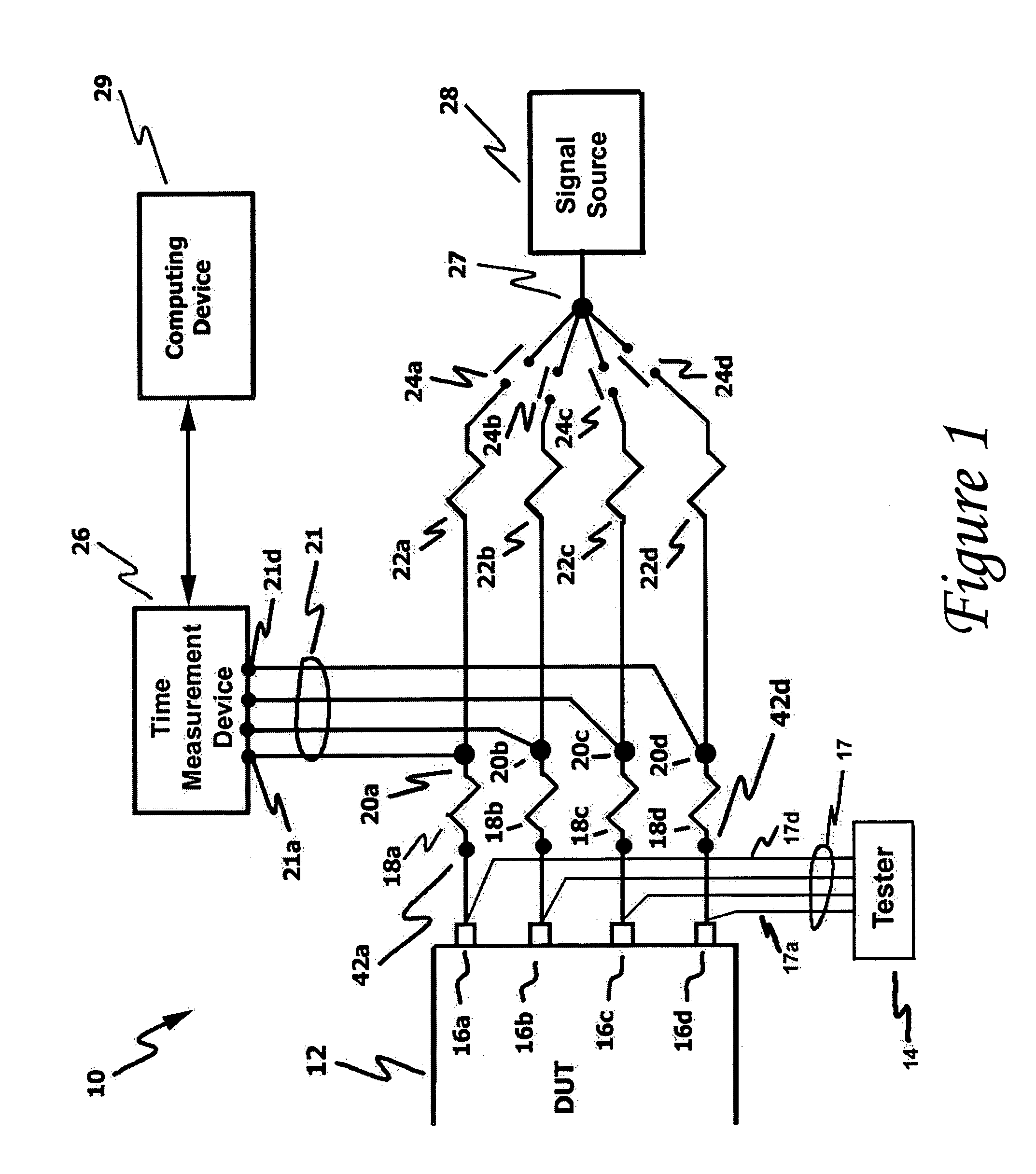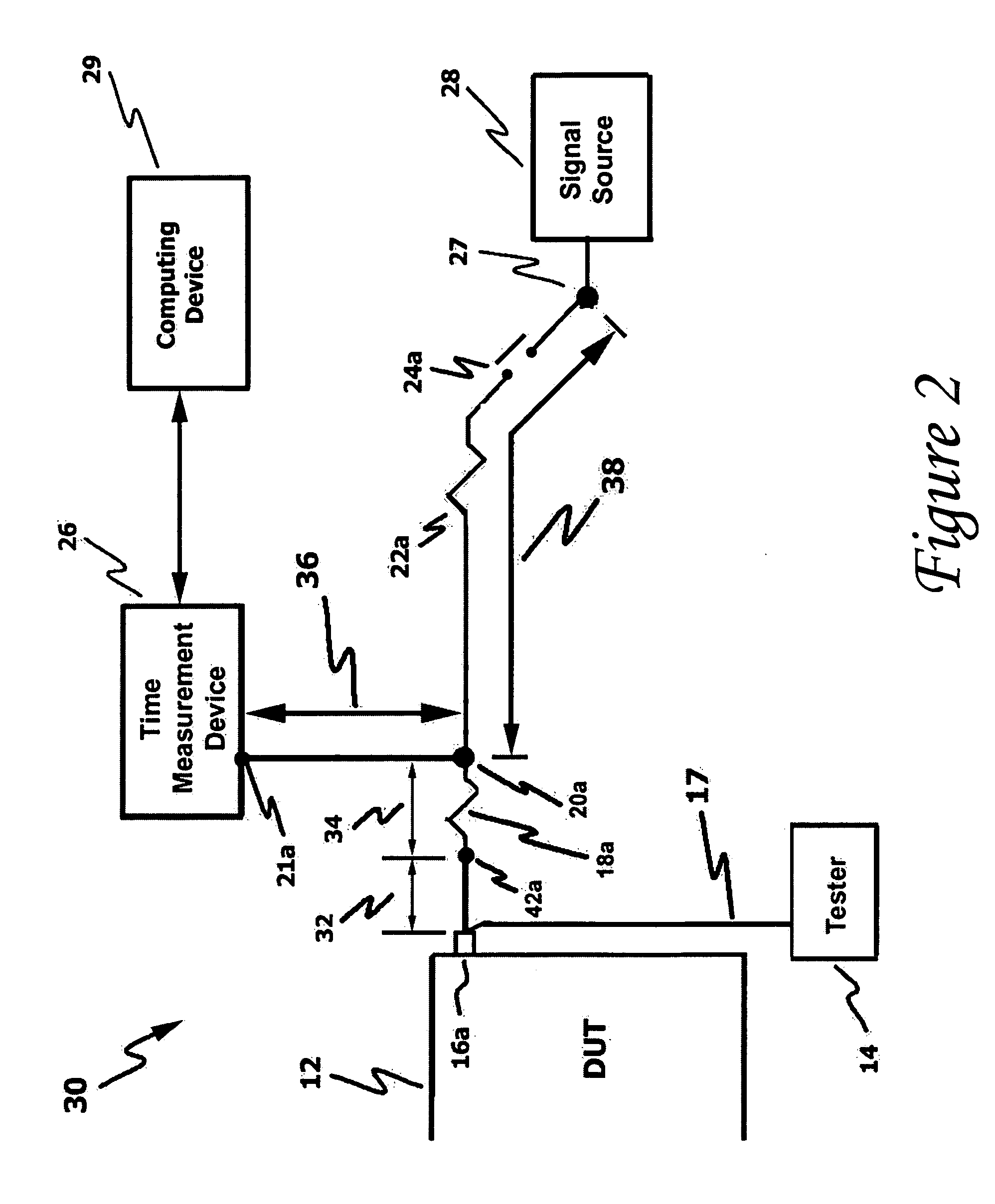System and method for calibrating signal paths connecting a device under test to a test system
a signal path and signal path technology, applied in the field of system and method for calibrating signal paths connecting a device under test to a test system, can solve the problems of circuit manufacturers, complex integrated circuits, faster and more efficient integrated circuits, etc., and achieve the effect of enhancing the precision of signal timing measurements and facilitating the development of increasingly faster integrated circuits
- Summary
- Abstract
- Description
- Claims
- Application Information
AI Technical Summary
Benefits of technology
Problems solved by technology
Method used
Image
Examples
Embodiment Construction
[0018] As previously discussed, the present technology relates to a method and apparatus for precision calibration of two or more distinct signal paths in a test setup. A signal path calibration system in accordance with the disclosed technology measures the signal skew associated with each distinct signal path connecting a device under test (DUT), such as an integrated circuit, to a time measurement device (TMD), such as a time interval analyzer. Signal skew measurements may be performed at selected times in conjunction with a DUT testing process. In addition, the measured skew values may be stored by the TMD. Such skew values may be used as needed to enhance the accuracy of DUT timing measurements by adjusting subsequent test signal timing measurements to compensate for skew between signal paths. Such stored skew values may also be used by a computing device to provide statistical analysis for signal path failure detection.
[0019] It should be noted that each of the exemplary embo...
PUM
 Login to View More
Login to View More Abstract
Description
Claims
Application Information
 Login to View More
Login to View More - R&D
- Intellectual Property
- Life Sciences
- Materials
- Tech Scout
- Unparalleled Data Quality
- Higher Quality Content
- 60% Fewer Hallucinations
Browse by: Latest US Patents, China's latest patents, Technical Efficacy Thesaurus, Application Domain, Technology Topic, Popular Technical Reports.
© 2025 PatSnap. All rights reserved.Legal|Privacy policy|Modern Slavery Act Transparency Statement|Sitemap|About US| Contact US: help@patsnap.com



